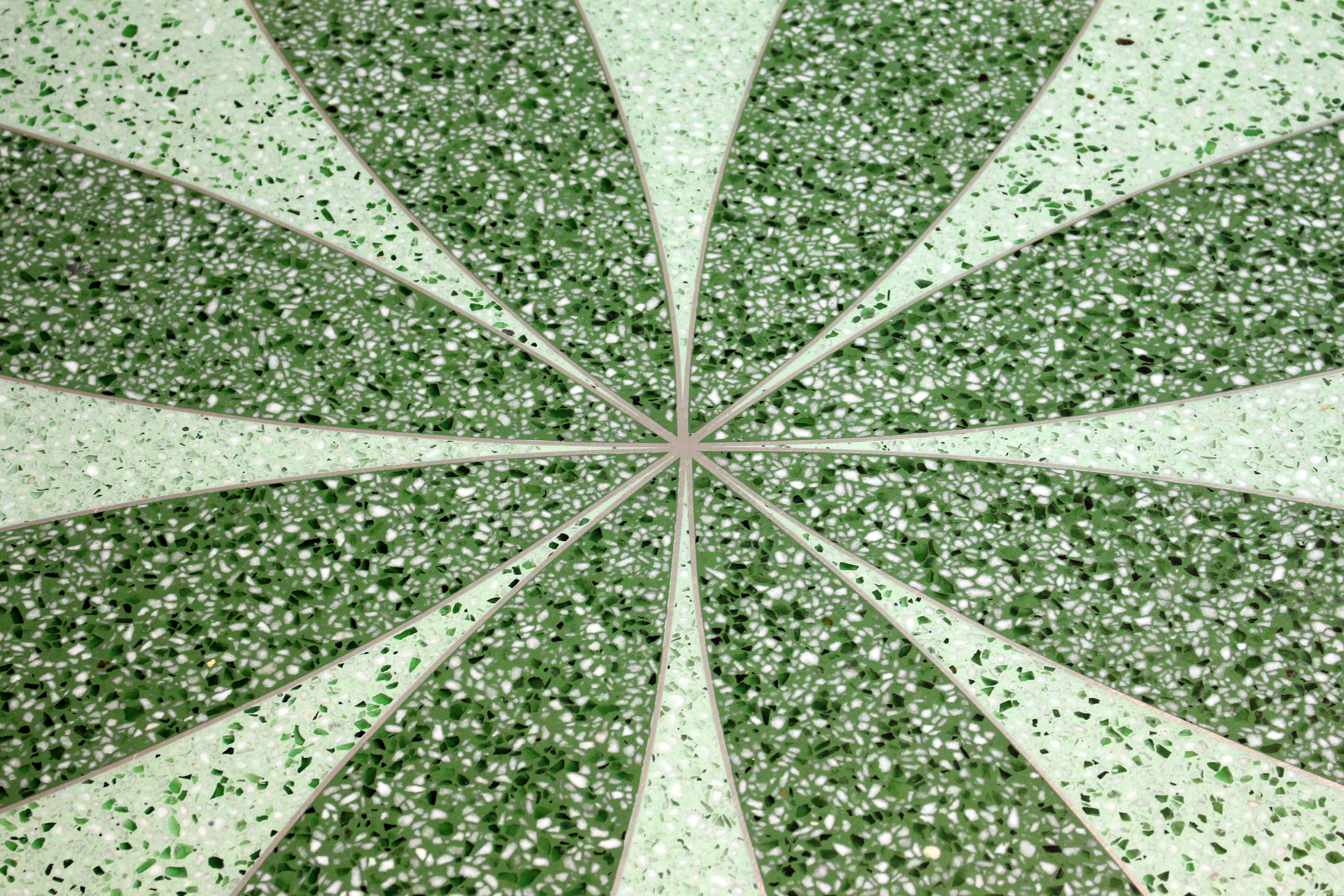Robust, Reused, Recycled: Terrazzo Flooring
Published date: 4th November 2021
CPG Europe comprises many product brands providing solutions for construction projects. From roofing to window installations and fire protection to flooring, our products ensure that your projects are built to last and sustainable for the long term. What’s more, we are continuously looking for ways to improve our sustainability and ways to reduce, reuse and recycle, starting from the solutions that we provide. Starting from the ground up, we take a closer look at the flooring solution that takes recycling in its stride, terrazzo.
We are reminded in nearly every aspect of our lives about the importance of recycling and minimising waste, whether through the recyclable symbol on food packaging, the reduction of single-life plastic in retail or horror stories about our dying planet on social media.
With the issue being so widely and openly discussed, it is now much easier to do our bit to reduce, reuse and recycle – even when it comes to interior design.
Here at CPG Europe we have been thinking a lot about recycled flooring materials, and how reusing materials helps reduce waste, with no adverse effect on the quality or life expectancy of the flooring.
A great way to do this is by opting for terrazzo flooring.

Choosing terrazzo flooring is a great way to use recycled materials
Reuse
The history of terrazzo dates back to Ancient Italy. Whilst some sources suggest that it can be traced back to the ancient mosaics of Egypt, its predecessors are said to be resourceful Venetian mosaic workers, who found a useful way to reuse marble remnants by incorporating them into other flooring systems.
Even now, just 17% of seamless terrazzo flooring is made up of processed epoxy resin binders whilst the remainder includes naturally occurring or recycled aggregates as well as pigments and fillers.
In fact, up to 60% of a terrazzo floor’s composition can be aggregate content, all of which can represent pre or post-consumer waste including recycled clear, coloured and mirror glass chippings as well as granite, flint, marble and mother-of-pearl chips from stone-processing plants.

Aggregates of different shapes and materials can be seen clearly here

Up to 60% of a terrazzo floor can be aggregate content
Robust
With many ancient terrazzo floors still in service today, it is a real testament to the durability and longevity of the material as a floor covering solution.
These days, epoxy terrazzo is ideal for commercial, industrial and institutional facilities, especially where durability, sustainability and minimal maintenance are crucial. This flooring solution is often used in areas with high traffic levels combined with the requirement for a decorative finish that is easy to clean and maintain.
The low maintenance aspect of the terrazzo material can also lead to significant energy savings over time. Whereas floor coverings such as carpet, tiles or vinyl require energy intensive vacuum or steam cleaning on a regular basis, the best method for cleaning epoxy flooring is using a dry and damp mop alongside the occasional spray buff.

Different shades can be used together seamlessly
Recycled
Recycled aluminium strips can also be used to complete any design work. These are most often used to separate colours when multiple colours of terrazzo are being used, or to create intricate patterns.
As well as helping to keep waste low, the National Terrazzo & Mosaic Association (NTMA) found that epoxy terrazzo offered clients the lowest lifecycle cost of any floor finish resulting from its durability, low maintenance requirements and minimal need for repair or replacement.
Conveniently located in many different locations across Europe, and globally, our CPG Europe flooring experts would be happy to help if you would like any more information on terrazzo flooring. If you can design and engineer it, together we can build and protect it.








